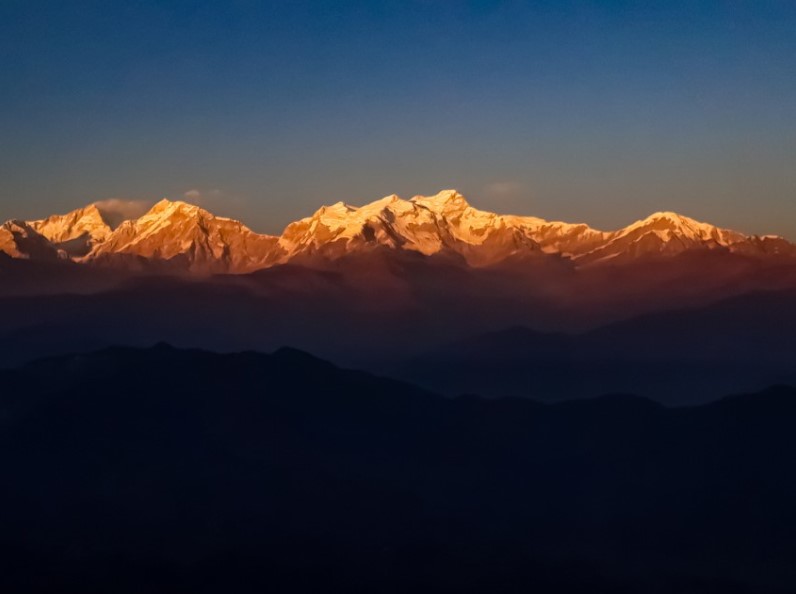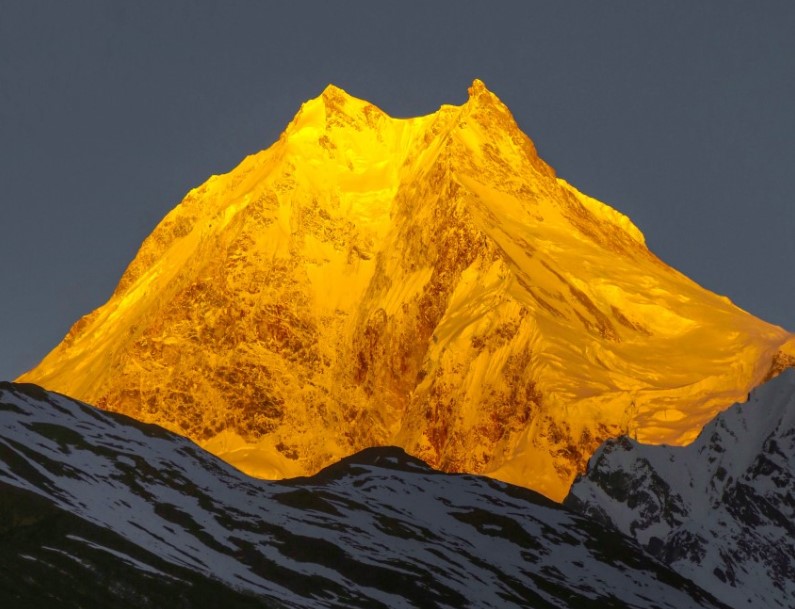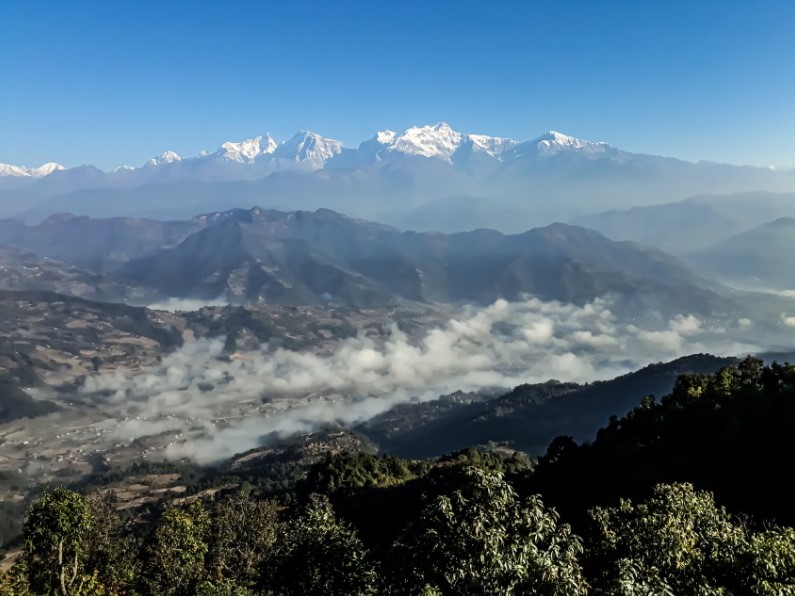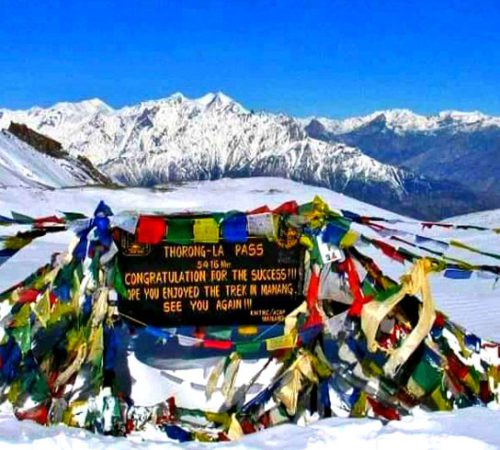Trip Facts
-
Duration
16 Days
-
Trip Start and End
Kathmandu/ Kathmandu
-
Difficulty Level
Moderate
-
Trip Area
Manaslu
-
Maximum Altitude
5106m/16,751.97ft - Larkya La Pass
-
Best Season
Spring & Autumn
-
Meals
Full Board
-
Accommodation
Teahouses, Guesthouses and Lodges
-
Transportation
Jeep/Bus
Highlights
- Less-crowded off-beat trail
- Scenic view throughout the trek
- Hike to Pungyen Monastery
- Stunning views of Siringi Himal, Ganesh Himal
- Traversing highest pass-Larkya La (5,106m)
- Outstanding views of Mt. Manaslu, Annapurna II, Cheo Himal, Himlung Himal, etc
Trip Overview
Manaslu Circuit Trek is apt for trekkers who are seeking natural beauty in its original form. The circuit trek is distinct from the popular Annapurna and Everest regions as the trail is less-crowded and hence peaceful. Not only this, but the public vehicle is the only means to get here on this off-beat trail. The bumpy but thrilling rides on the rugged off-beat trail are something new for all to experience.
The rich natural beauty, diverse flora, and fauna, old Tibetan culture, lifestyle, and ancient Pungyen Monastery in the vicinity of the world’s 8th highest Mt. Manaslu, Ganesh Himal, Siringi Himal, and other mountains are very impressive. The highest Larkya La Pass (5,106m) traversing and the marvelous views from the top look surreal. The beautiful settlements and warm hospitality of the locals give pleasure to all. Experience the beautiful Manaslu Region through a Manaslu Circuit Trek.
The trek on an ancient trail along which you enjoy authentic Nepali culture and hospitality, promises breathtaking views of Manaslu and other Himalayan peaks always on the background. You get to witness ancient cultures and the almost medieval lifestyle of the people as you trek up north towards the peaks.
Shielded from modernization and commercialization, the local people’s lifestyle has changed little over the centuries, thus retaining their purity. So your trek to Manaslu will be akin to time-travel. going back in time. The trail has teahouses along the way for a night halt, but one could opt for a camping trek and sleep under the stars.
Wildlife: 33 species of mammals including snow leopard, musk deer and Himalayan tahr; three species of reptiles
Birds: 110 species of birds
Vegetation: 1,500-2,000 species of flowering plants
Best Season: March-May, September-November
Added attractions: 11 species of butterfly
Detail Itinerary
+ Show MoreYou are greeted by our representative at the Tribhuvan International Airport upon your arrival. Then, transfer to the hotel for rest. Later, meet our team and guide for a short orientation on Manaslu Circuit Trek. Overnight stay in a hotel.
- Hotel
- 1,400 m; 4,600 ft
Cost Includes
- All land transportation and domestic flights as required for the trip itinerary
- Pick-ups and Drop-offs in a private vehicle at the airport (Arrival & Departure)
- Hotel Accommodations (Bed & Breakfast) in the city
- 3-course meal (Breakfast, Lunch, & Dinner) during the entire trek
- Accommodations in teahouses/guesthouses/lodges.
- Necessary trek permits, national parks, and restricted areas entrance fees
- First-aid Medical Kits
- Experienced and government license holder English-speaking trekking guides
- Porters (2 trekkers: 1 porter)
- Allowances for crew staff including insurance on medical grounds
- All government taxes, official charges
Cost Excludes
- International Flights
- Visa Fees
- Travel Insurance
- Personal expenses
- Tips
- Additional Service
- Unforseen Events
Guidelines / Information
Permits:
Obtain the necessary permits for the trek. This typically includes the Manaslu Restricted Area Permit and the Annapurna Conservation Area Permit (ACAP) and Trekkers Information Management System (TIMS) card. Make sure you have these permits before starting the trek.
Physical Fitness:
The Manaslu Circuit Trek involves high altitudes and challenging terrain. Prior physical conditioning is essential. Regular cardiovascular exercises and strength training are beneficial.
Altitude Acclimatization:
Acclimatization is crucial to prevent altitude sickness. Plan your itinerary with adequate rest days to allow your body to adjust to higher altitudes gradually.
Packing:
Pack appropriate clothing and gear for various weather conditions. Essentials include sturdy hiking boots, warm layers, waterproof jacket and pants, a sleeping bag suitable for cold temperatures, sun protection (hat, sunglasses, sunscreen), and a first aid kit.
Hydration and Nutrition
Stay hydrated by drinking plenty of water throughout the trek. Bring water purification tablets or a filtration system for safe drinking water. Carry high-energy snacks like nuts, energy bars, and dried fruits to sustain your energy levels.
Responsible Trekking:
Respect the local culture, customs, and environment. Dispose of waste responsibly and avoid littering. Carry back all non-biodegradable waste.
Weather:
The weather in the Himalayas can be unpredictable. Be prepared for sudden changes in weather conditions, including rain, snow, and strong winds. Check the weather forecast before starting the trek and be flexible with your plans if necessary.
Safety:
Stay informed about trail conditions and potential hazards. Follow the instructions of your guide and pay attention to any safety warnings. Carry a fully charged mobile phone with emergency contacts saved.
Insurance:
Purchase comprehensive travel insurance that covers trekking activities, including emergency evacuation and medical treatment at high altitudes.
Communication:
Inform someone about your trekking itinerary and expected return date. Stay in communication with your trekking group or guide, especially in remote areas where mobile network coverage may be limited.
Trekking Season:
The best time for the Manaslu Circuit Trek is during the spring (March to May) and autumn (September to November) when the weather is generally clear and stable.
FAQs
Spring (March to May) and Autumn (September to November) are the best times for the Manaslu Circuit Trek. During these seasons, the weather is stable, skies are clear, and temperatures are moderate. The autumn season offers excellent visibility, while spring brings blooming rhododendrons and lush landscapes.
The trek is considered challenging due to the high altitudes, remote locations, and long trekking days. It requires good physical fitness, stamina, and some previous trekking experience, especially at high altitudes.
Manaslu Restricted Area Permit
Manaslu Conservation Area Permit (MCAP)
Annapurna Conservation Area Permit (ACAP)
Trekkers Information Management System (TIMS) card.
The trek typically starts at Soti Khola, which is accessible by a 7-8 hour drive from Kathmandu. The drive takes you through beautiful countryside and rural villages.
Accommodation is mostly in teahouses, which are basic lodges providing meals and a place to sleep. Rooms are usually twin-sharing with shared bathrooms. In more remote areas, facilities may be more rudimentary.
Clothing: Layered clothing, thermal base layers, fleece jackets, waterproof jacket and pants, trekking pants, gloves, hat, and neck gaiter.
Footwear: Sturdy trekking boots, camp shoes, and trekking socks.
Sleeping: Sleeping bag (rated to -15°C), sleeping bag liner.
Accessories: Trekking poles, headlamp with extra batteries, sunglasses, sunscreen, lip balm, water purification tablets, first aid kit, and toiletries.
Backpack: A 40-50 liter backpack for daily essentials and a duffel bag for porters.
Yes, altitude sickness is a risk as the trek reaches heights above 5,000 meters. Proper acclimatization, staying hydrated, and following a slow ascent are crucial. It’s advisable to carry altitude sickness medication like Diamox and be aware of the symptoms.
Teahouses offer a variety of meals, including traditional Nepali dishes like dal bhat (rice and lentils), as well as pasta, noodles, soups, and fried rice. While the food is basic, it is nutritious and adequate for trekking needs. Vegetarian options are readily available.
Charging facilities are available at most teahouses, but they may charge a fee for the service. It’s advisable to bring extra batteries or a solar charger, especially for higher altitudes where electricity can be limited.
Mobile network coverage is sporadic and limited in higher regions. NTC and Ncell provide some coverage, but it’s unreliable. Consider bringing a satellite phone or informing family and friends of your itinerary before you start the trek.
Yes, travel insurance is essential for the Manaslu Circuit Trek. The insurance should cover high-altitude trekking (up to 5,160m), emergency evacuation, medical treatment, and trip cancellation.
In case of serious medical issues or accidents, emergency evacuation is usually done by helicopter. This is why having comprehensive travel insurance that covers such emergencies is crucial. The guide will arrange for the evacuation if needed.




